Last-Minute NYC Holiday Gift Guide 🎁
We’ve created a holiday gift guide with presents for the intrepid New Yorker that should arrive just in time—


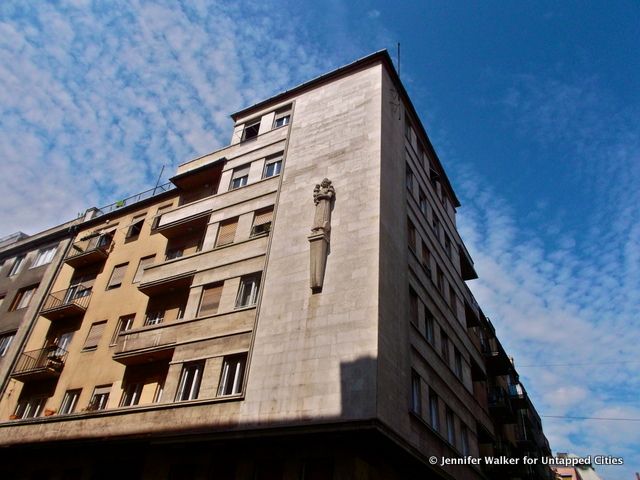
Bauhaus architecture in Budapest by Gábor Krausz (1942)
In and around the streets of Budapest’s XIII District the term Bauhaus refers to an architectural style rather than an ’80s Goth band. While the Hungarian capital conjures up impressions of epic neo-baroque Habsburg palaces, if you move away from the opulent streets of the central districts, Budapest’s eclecticism begins to reveal itself to the willing observer who dares to look up.
Bauhaus is not a style that many think of when Budapest comes up in conversation, but in the back streets of the VIII District, just behind the Víg Theatre you’ll find residential houses carrying the style. From the outside, you might catch a glimpse of a statue or frieze on the wall, but the neighborhood’s true secret treasures lie inside the residential buildings, hiding staircases curving up into infinity and functional rooms designed to store prams and avant-garde elevators.
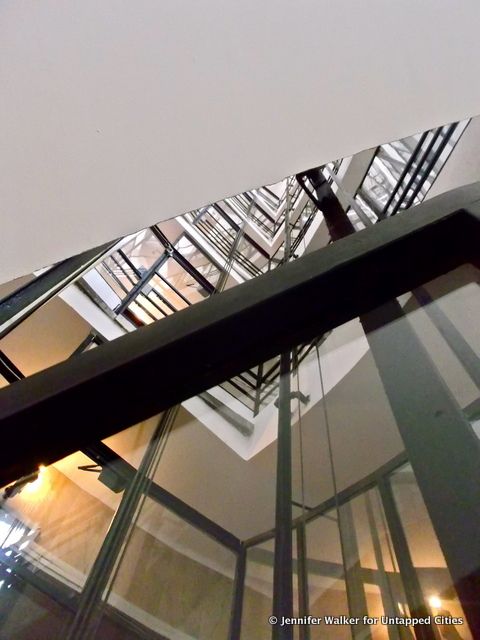
Bauhaus combined functionality and aesthetics, the elevators in the houses of the XIII District were both made to follow elegant lines and practical use
In this context, the term Bauhaus refers to a German architectural concept which integrates art, technology and craftsmanship, immortalizing itself through Walker Gropius’s manifesto and architectural school in Weimar, Dessau and Berlin. However, the form combining architectural functionality and a modernist merger of the arts spread across Europe in the 1930s, traveling out of the country, even making its way to New York in the 1960s, such as Marcel Breuer’s design for the Whitney Museum. The balance between severe, striking angles and elegant geometric style combined with practical functionality, often defines Bauhaus as an architectural style.
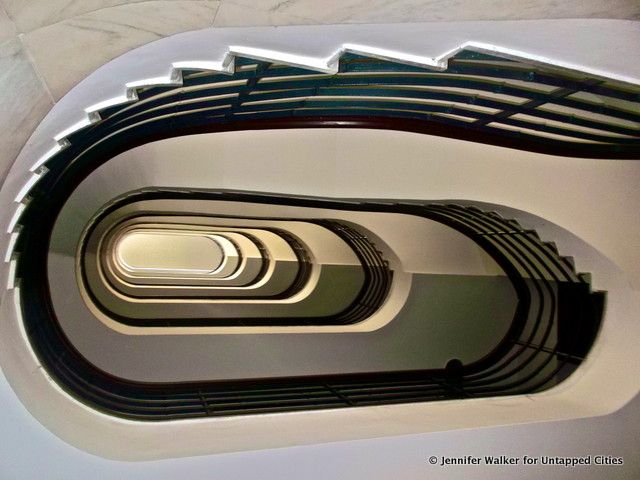
Stairwell in 38 Pozsonyi utca, XIII District – Architects Béla Hosfstätter and Ferenc Domány
To understand Budapest’s Bauhaus revolution it’s important to learn a little about how the city spread out. The historic core of the capital is centred about the castle and the central part of the city, but heading out into today’s XIII District, also known as Újlipotváros, in the mishmash of art deco and modernist structures, you’ll find the occasional Bauhaus treasure.
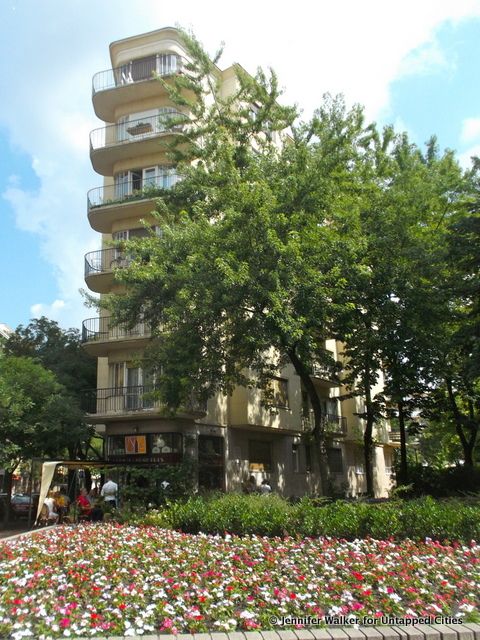
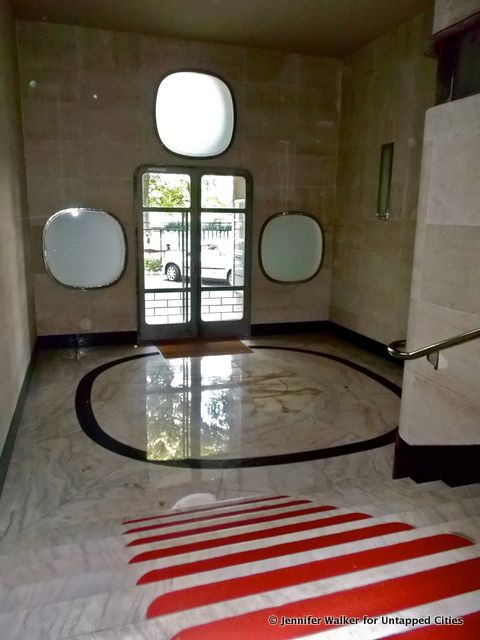
Pozsonyi út 44-46, architect Béla Málnai (1935-36)
In the early 20th century, today’s XIII District was an urban wasteland housing the city’s industrial estate at the time, but as the city grew its limits started to expand with residential neighborhoods popping up in the style of the time. Újlipotváros grew in the 1930s, and as a result all the buildings in the area capture the spirit of its time. You’ll find modernist buildings sat side-by-side with art deco and Bauhaus styles.
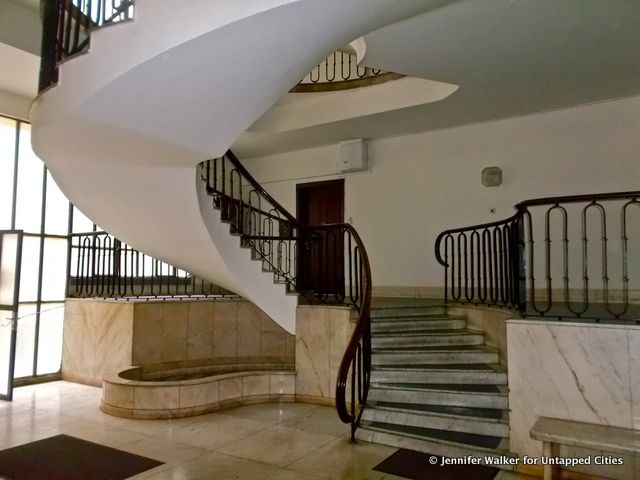
Pozsonyi út 40, architects Béla Hofstätter and Ferenc Domány (1935-36), staircase from below
On the “Bauhaus Walk” by the Hungarian exploration group “Miénk a Ház”, local guide Balázs shows 11 private houses embodying the Bauhaus style on an intensive four hour walk round the neighbourhood. Some of the house features included cellars built for use as a shelter, like the one in Alig utca 3, or storage rooms for baby strollers.
Aside from the modern amenities found in some of the Bauhaus structures, the stairwells are the most interesting hidden features.
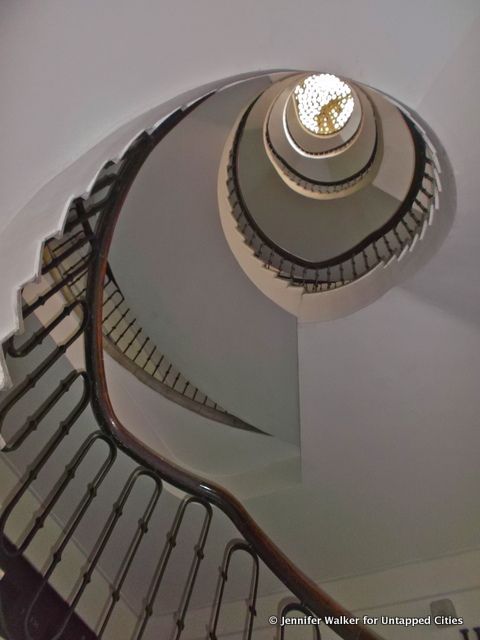
Pozsonyi út 40, architects Béla Hofstätter and Ferenc Domány (1935-36), staircase, upward view
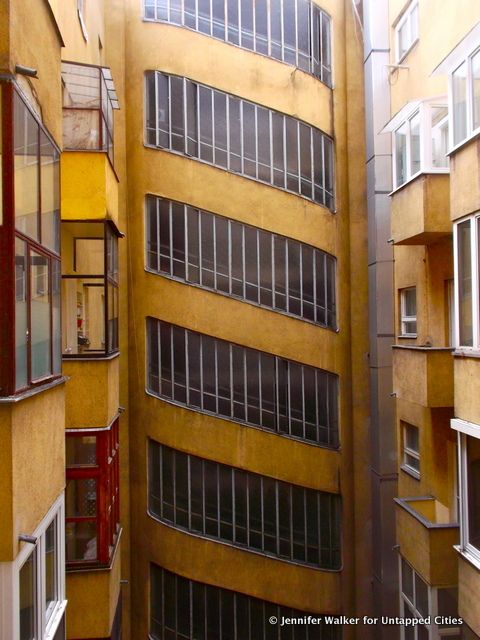
Pozsonyi Út 40 houses a stairwell curving up six floors to a skylight, but the descent launches down a spiral of blue. Neighbouring number 38’s staircase is just as spectacular. The black and white staircase feels like an optical illusion as you stare up an apparent never ending ring to the bright top.
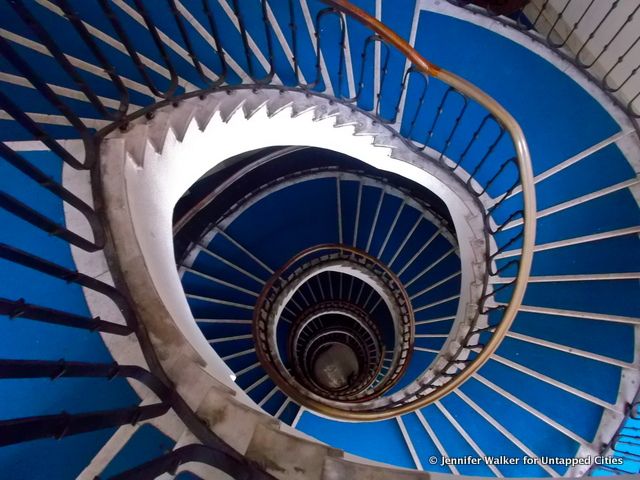
Pozsonyi út 40, architects Béla Hofstätter and Ferenc Domány (1935-36), staircase from above
In a city like Budapest, maybe of the hidden secrets often go unseen by those visiting for a weekend. There is nothing about Budapest’s Bauhaus in the guidebooks or if there is a sentence or two in the mention, they’re ignored in favour of more dramatic sites, like Buda Castle or the Basilica. But the best things about of the Hungarian capital lie in the details.
Subscribe to our newsletter